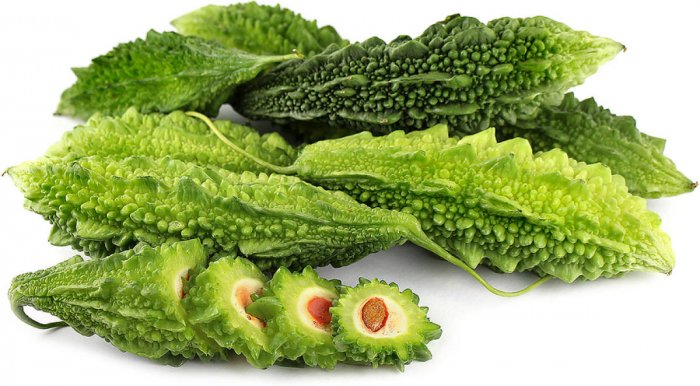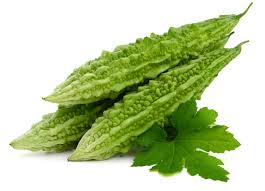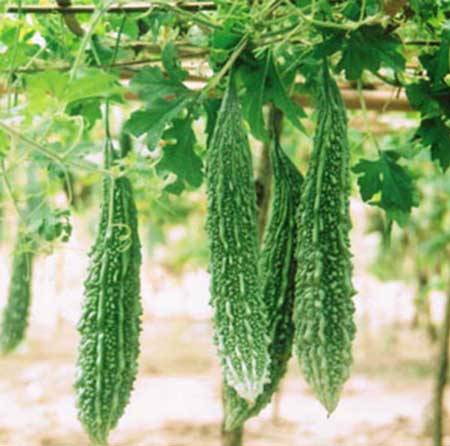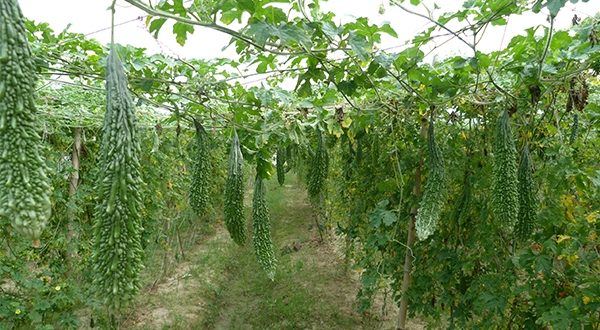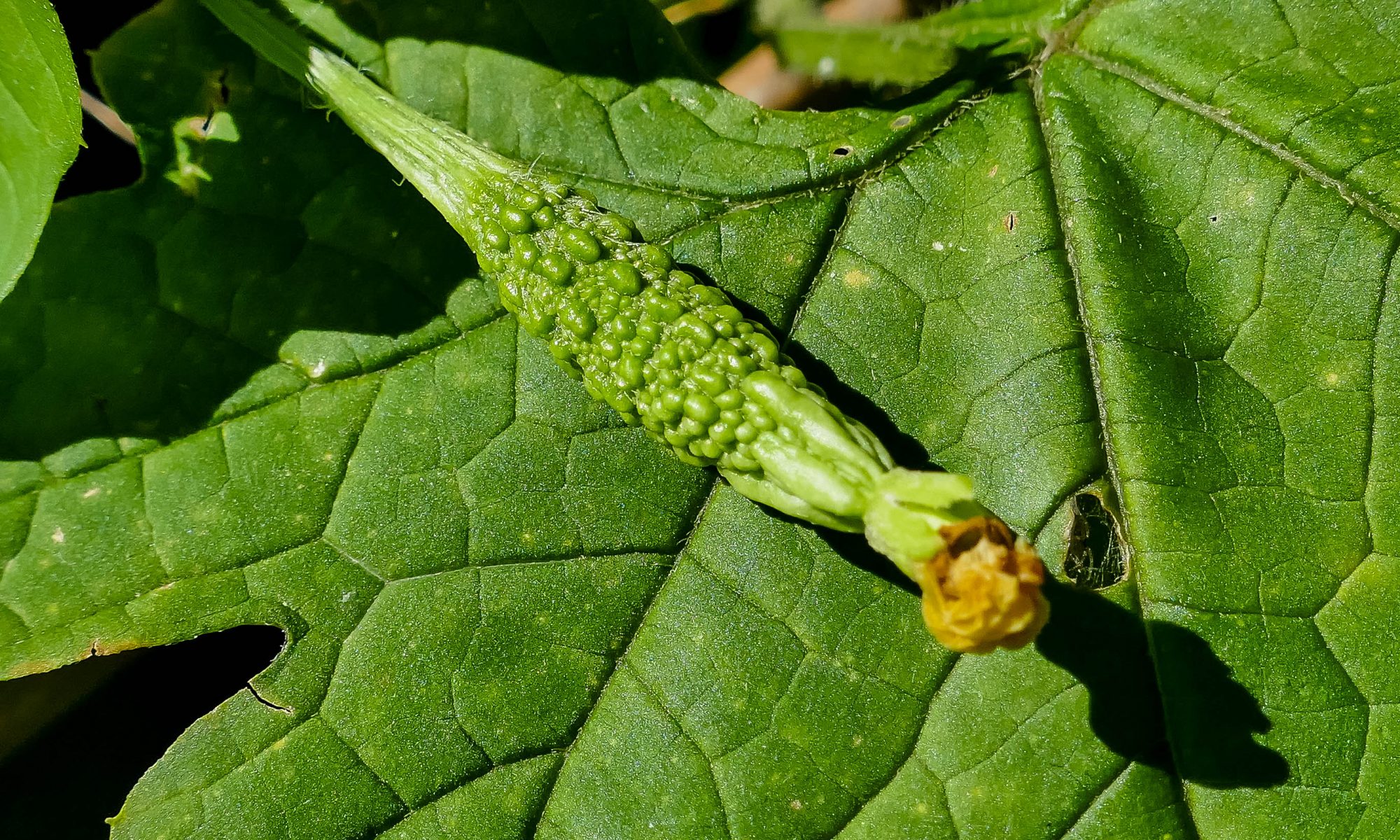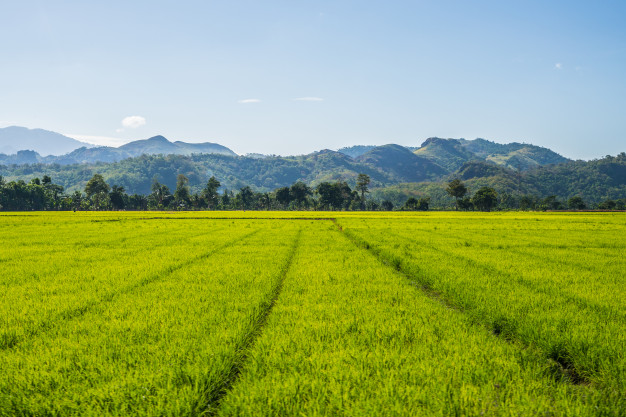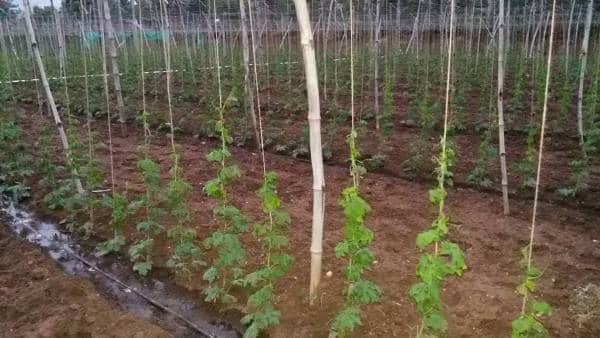- Phosphorus is found in sufficient quantity in Bitter Gourd. It removes phlegm, constipation and digestive problems and makes the digestive system strong.
- It is good to consume bitter gourd juice when there is gas and indigestion in the stomach.
- Drinking bitter gourd juice strengthens the liver and eliminates all liver problems and also provides benefits in jaundice.
- It does not allow harmful fats to accumulate in the arteries of the heart, thereby maintaining blood circulation.
- It has two compounds called momersidine and charatin which control blood sugar.
- It contains beta-carotene which keeps away eye related diseases and also helps in increasing light.
Management of viral diseases in Bitter Gourd
- In Bitter Gourd, viral diseases are caused by white flies and aphids.
- In this disease, irregular, light and dark green and yellow stripes or spots appear on the leaves.
- The leaves then turn, block, shrink and the veins of the leaves become dark green or light yellow.
- The plant remains small and the fruits seem to be full or fall off.
- White fly and aphid should be controlled to prevent this disease.
- Spraying of acetamiprid 20% SP @ 40g / acre and streptomycin 20g in 200 liters of water at an interval of 10-15 days to protect such insects. Or
- Spray spraying with Streptomycin 20 g + Diafenthiuron 50 WP 300 gm per acre in 200-250 liter water.
Prevention of bitter gourd from sucking pests
Sucking pests such as aphid, jassid, whitefly, mealybug can seriously damage the Bitter Gourd crop.
- Use Imidacloprid 17.8 SL 5 ml per 15 litres of water to protect against sucking pests or
- Spray Thiamethoxam 25 WG 5 g per 15 litres of water
- Insecticides should be sprayed in turn so that the insects do not produce resistance against insecticides.
- Use Bavaria Basiana 1 kg per acre through the organic medium. Or you can use it along with the above-mentioned pesticides.
How to save the Bitter Gourd crop from Anthracnose disease
- It’s a very harmful disease of Bitter gourd.
- Initially irregular yellow or brown spots start appearing on the leaves.
- In the next stages, these spots become darker and spread on the entire leaves.
- Small dark spots are produced on the fruit which then spread on the whole fruit.
- Pink spores are formed between these spots in wet weather.
- Due to this, the process of photosynthesis is interrupted and the plant growth stops completely.
- To prevent this disease, treat the seeds at the rate of Carboxin 37.5 + Thiram 37.5 @ 2.5 g / kg seed.
- Spray Mancozeb 75% WP 400 gram/acre or chlorothalonil 75% WP 300 gram/acre at 10 days intervals.
Management of Powdery mildew disease in bitter gourd
- First of all, white-grey spots start appearing on the upper part of the leaves which later grow into white coloured powder.
- This fungus draws nutrients from the plants and hinders photosynthesis, which stops the plant’s growth.
- With the growth of the disease, the infected part dries up and the leaves fall off.
- Hexaconazole 5% SC 400 ml or Thiophanate methyl 70 WP 200 ml or Azoxystrobin 23 SC with 200 to 250 litres of water for an interval of fifteen days.
Advantages of Staking and trellising in Bitter gourd
- Bitter gourd grows very fast and vines elongate rapidly within two weeks after planting.
- Staking and trellising will increase fruit yield, size, reduce fruit’s rotting.
- This makes the process of harvesting and spraying of pesticides easier.
- The trellis should be 1.2-1.8 meter high constructed from stacks 1.2 -1.8 meter apart.
What is the suitable climate for the cultivation of pumpkin, bitter gourd, cucumber, watermelon, etc.?
- Cucurbitaceae crops are a subtropical vegetable and require hot and humid climatic conditions for its fast growth and higher yield.
- Night and Day temperature of 18-22° C and 30-35° C respectively is optimum for its proper growth and high fruit set.
- The seed germination is fast at the temperature range of 25-30° C.
- The crop grown at optimum temperature has a higher proportion of female flowers and fruit per plant.
Proper ways of irrigation to increase the productivity of Bitter Gourd crop
- Bitter gourd cannot tolerate drought or water stagnation.
- Water the crop immediately after sowing or planting on the third day and then once a week depends upon the soil moisture.
- Maintain good soil moisture in the upper 50 cm. of soil where the majority of roots are located.
Farmers should sow these varieties of crops in march-April to increase the yield
| SN | Crop Name | Important variety (company’s name) |
| 1. | Bitter gourd | Nagesh (Hyveg), Amanshri, US1315 (Nunhems), Akash (VNR) |
| 2. | Ridge gourd | Aarti |
| 3. | Pumpkin | Kohinoor (pahuja), VNR 11 (VNR) |
| 4. | Okara | Radhika, Vinas Plus (Golden), Singham (Nunhems), Shatabdi (Rashi) |
| 5. | coriander | surbhi (Namdhari), LS 800 (pahuja ) |
Irrigation in Bitter gourd
- Bitter Gourd cannot tolerate drought or water stagnation.
- Water the crop immediately after sowing or planting, on the third day and then once a week depending upon the soil moisture.
- Maintain good soil moisture in the upper 50 cm of soil where the majority of roots are located.
Like and share with other farmers by clicking on button below
Share
